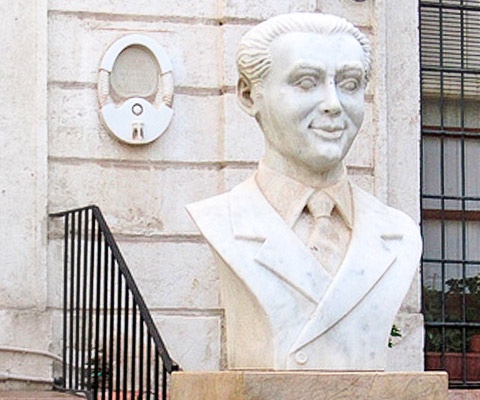
It was just over a mile walk to the bus stop from the campsite. Wednesday 15 th July and face masks are again mandatory in Andalucia. The bus passed through Aguadulce before taking a dramatic coast road to Almeria – about a 20 minute ride. The city is associated with Spain’s most famous poet, Frederick Garcia Lorca.
- Como no me he preocupado de nacer, no me preocupo de morir.
- As I was not worried about being, born, I don’t worry about dying.
- Quoted in “Diálogos de un caricaturista salvaje,” interview with Luis Bagaría, El Sol, Madrid (1936-06-10)
- As I was not worried about being, born, I don’t worry about dying.
Federico Garcia Lorca had more than a casual relationship with Almería. In addition to being the land that inspired him to write the famous “Bodas de Sangre”, also he lived here for three years in his childhood.
Almeria city pays tribute with the “Avenida Federico Garcia Lorca,” better known as “La Rambla”.

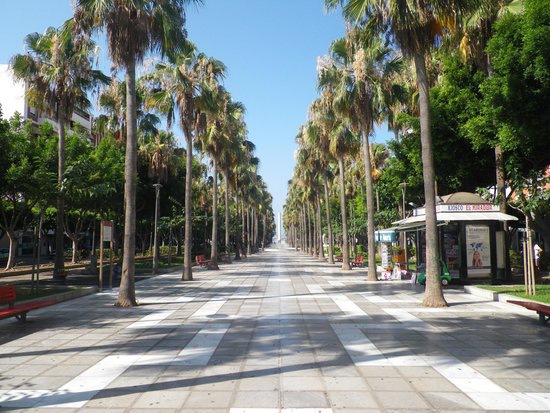
Like the palm- lined Paseo along the harbour front, the Ramblas is very pleasant to stroll along. The Cathedral was sadly closed; a striking building at the heart of the old city. It was begun in 1524 – it resembles a fortress with its six towers – to repel any invasion by pirates, apparently. We found the starting point of the Camino Mozararbe.


Then a coffee in the Arab Quarter
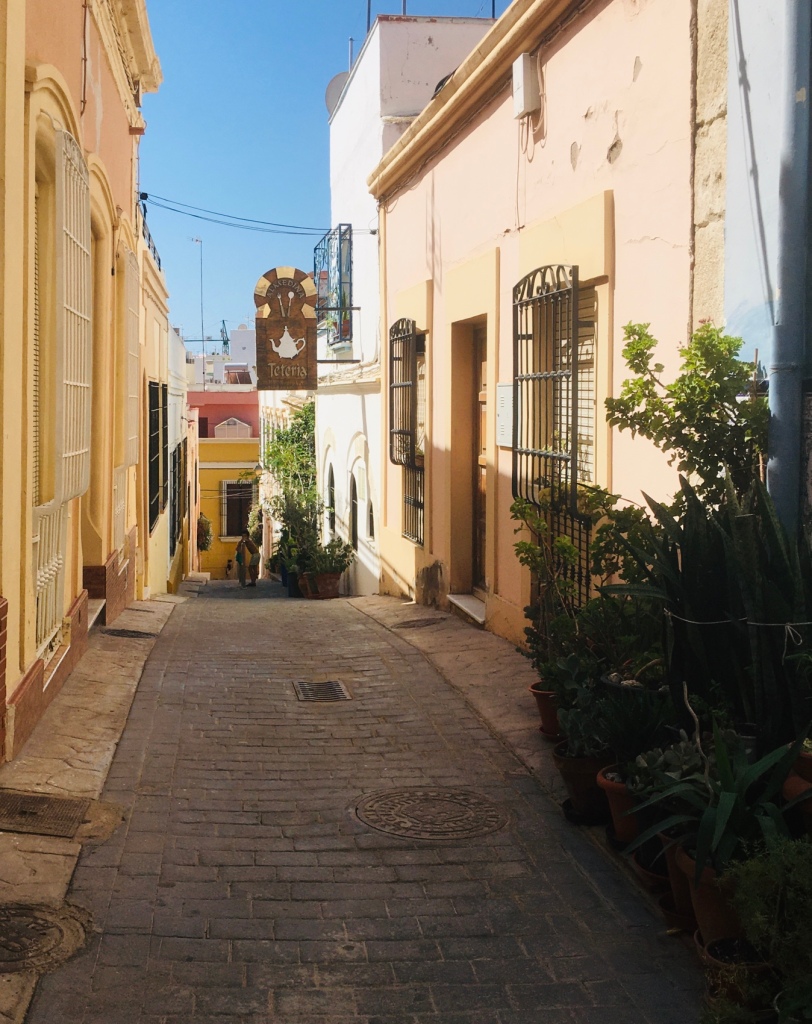


before tackling the Alcazaba Fortress – free admission – It has been well looked after in recent times, ringed by cliffs it serves as a reminder of the past glories of the city. It was the chief port of the Córdoba Caliphate and by the 11 th century the capital. Its chief source of wealth was weaving silk from the silkworms of the Alpujarras. In 1522, there was a devastating earthquake. Today it is a city relivened by Agri euros and a magnet for migrant job- seekers. There are frequent ferries to Morocco and Algiers.

It has a varied history, being used as military camp and its mosque at the eastern end being converted to the Ermita de San Juan, by the Catholic monarchs who took Almeria in 1489.

The Islamic influence is most noticeable in the running water furrowing it’s way through sympathetically laid out gardens with several fountains.



There is a story that a slave girl leapt to her death from the walls after her imprisoned Christian lover has been thrown from them.

We wanted to visit Los Refugios de la Guerra Civil. However, the Siesta still holds Andalusia in its thrall and it was closed until18.00. Hard to understand that a city with so many places of interest, especially its museos, should be closed for the best part of a half day – 21st Tourism . No.
So we made do with a walkabout. The Paseo de Almería was busy and notable for its colourful roof!


There were quiet spots, too.
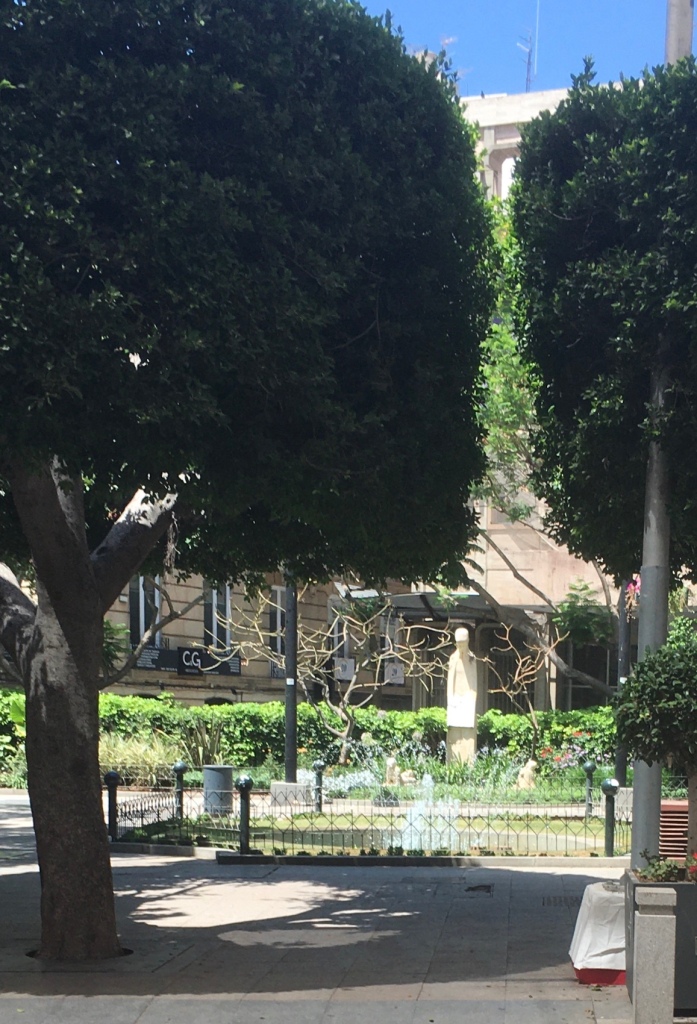
And some welcome, pedestrian only squares.


An interesting piece of more recent industrial heritage is the Cargadero de Mineral ( Cable Ingles )

Known as The English Cable for loading ore,located in Almeria operated by an English company «The Alquife Mines and Railway Company Limited.
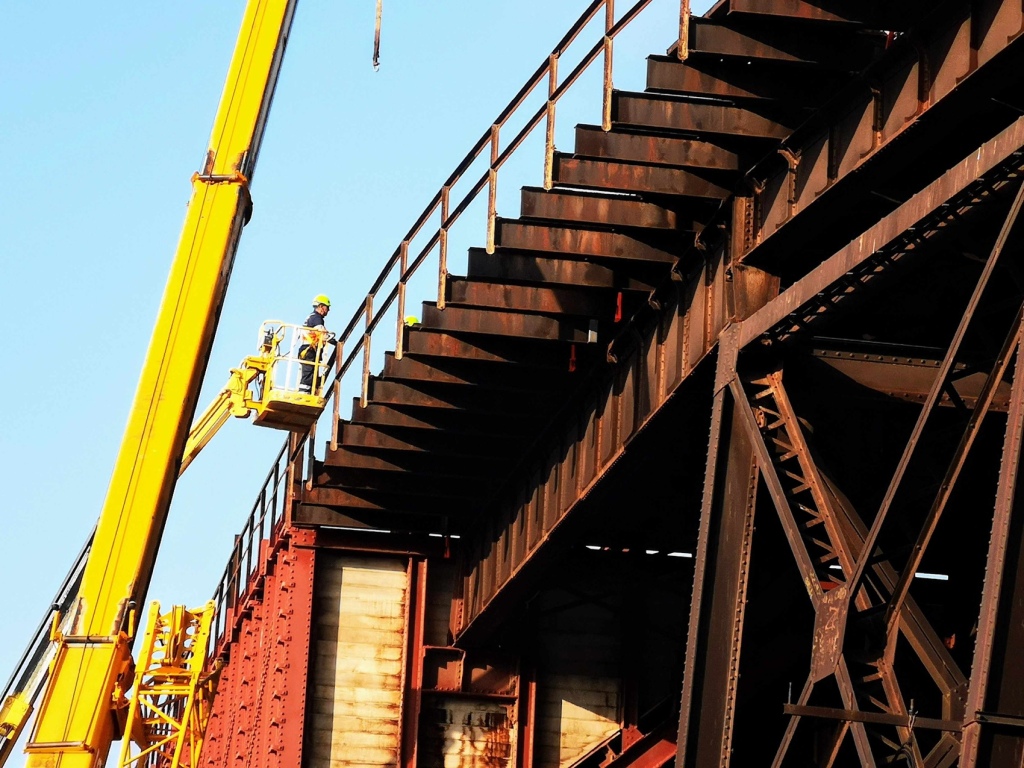
The Hacho Bridge operated for more than sixty years. It was even used by both the Nationalists and the Republicans during the Spanish Civil War. Hacho Bridge, which was the largest iron viaduct in Spain, was a major source of employment in the area. Hundreds of people lived for almost a decade near Alamedilla station during its construction. Many continued to live there after it opened, working on its maintenance.
However, in the late 1950s living conditions in Eastern Andalusia, caused by postwar period austerity, meant many people left the area in search of work. At the same time, Spanish railways began to operate heavier diesel locomotives which were unable to use Hacho Bridge due to its maximum load weight.
Ten years later the station at Alamedilla had been closed to passengers. A decade of years later, Spanish railways sold Hacho Bridge to a Madrid scrap dealer together with other bridges on the Almeria line for 1.5 million pesetas.
In November 1978, local people began a campaign to save Hacho Bridge after they discovered that it was to be demolished. The Mayor of Alamedilla, D. Abelardo Corral, appealed to the Governor of Granada, D. José Maria Fernandez Fernandez. In a hastily convened meeting, the provincial government agreed with the local committee and declared Hacho Bridge a Historical Artistic Monument. This injunction was then served on the scrap and demolition company. The Civil Guard were ordered to go immediately to the bridge. They arrived just in time and dismantled the dynamite already installed at the base of trestles.
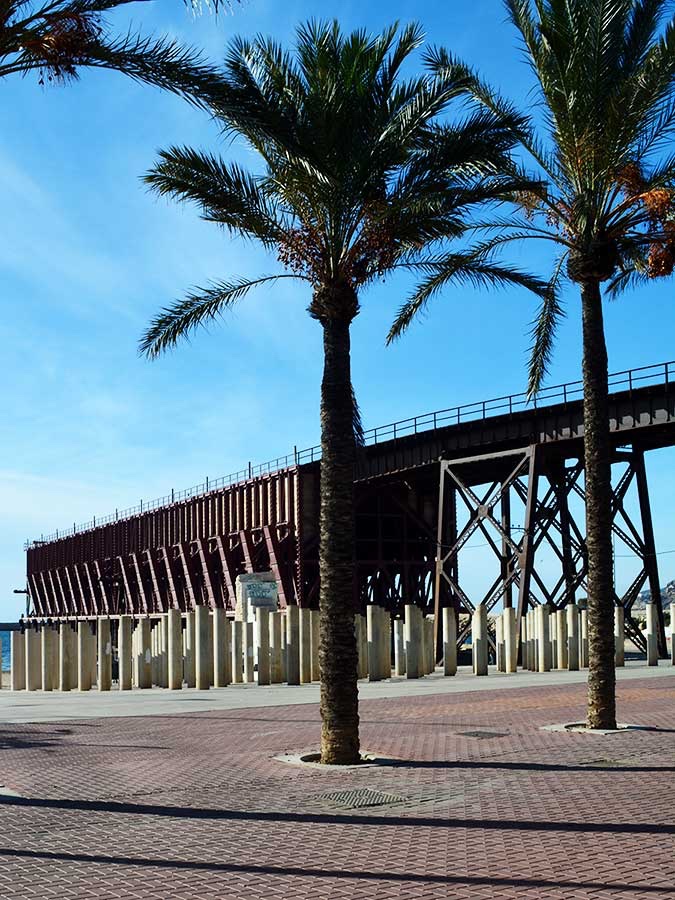
Hacho Bridge is now protected by a national protection order as a Structure of Cultural Significance.
There is a lot enjoy in Almeria,plus the National Park in nearby Cabo de Gato. It would make a good city break, but make sure you get up and about early to visit sites, before the Siesta!


Leave a comment